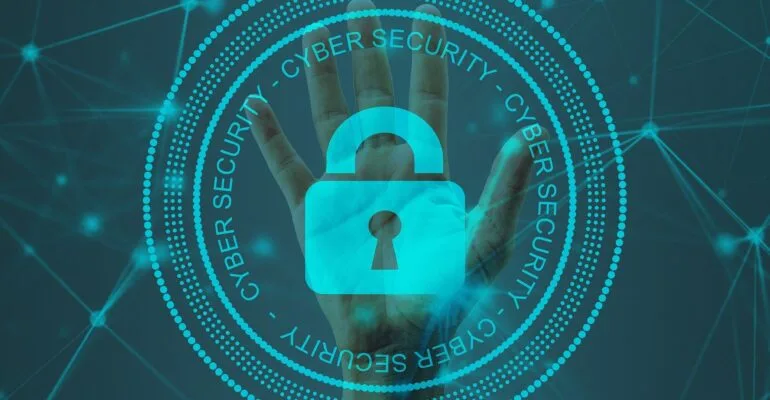Meta Description: As new threats arise in the cloud space, it is imperative to keep Cybersecurity policies up to date to secure your business workspace.
Managing a cloud service and adopting cloud cybersecurity are critical components of maintaining a reliable, efficient company. However, cloud security is a developing technology expected to see more integration at the highest level from nearly all businesses with extensive cloud installations.
What exactly is cloud cybersecurity?
Cloud security, often known as cybersecurity, is a set of rules, protocols, procedures, and solutions to protect cloud, data, and infrastructure networks. These security procedures are intended to secure cloud data, improve regulatory compliance, preserve consumers’ privacy, and provide authentication criteria for individual users and machines. Cloud security may be customized to fit the company’s unique needs, from authentication to traffic filtering.
Contact Centers Cloud Cybersecurity Challenges
The traditional telephone route is no longer adequate for addressing the demands of contact centers. As a result, because the cybersecurity implications of cloud computing are huge, most cloud contact centers use the Internet to initiate or accept calls and perform other necessary tasks to make their activities more successful. Therefore, a solid cybersecurity architecture is required for a cloud-based call center.
While computers and the Internet provide various cloud cybersecurity features that improve call center performance and contact center security, they also expose the contact center to significant security dangers.
Attack on Telephone Denial-Of-Service
The Telephony Denial-of-Service (TDoS) attack enables many calls to the call center that it’s overwhelmed. It works in the same way as a distributed-denial-of-service attack, which happens when many visitors overload a web service.
Data Theft Attack
Call centers work with clients from all over the world, and they have access to their contact information. However, in rare circumstances, the contact center may also have access to more sensitive information, such as payment information. As a result, call centers must safeguard their records.
A single failure in data protection policy may result in severe financial loss to consumers and, eventually, to the call center. Of course, such an attack can be carried out through the Internet, but there is a danger of harming in-house employees.
Do-Not-Call Registry Violation
Though this is not a direct threat to contact centers, violations of Do-Not-Call registers result in firms paying substantial fines to the FTC, and the Do-Not-Call List permits callers to receive unwanted sales pitches.
Identity Theft as a Result of Dialing Errors
Misdialing is a common mistake made by people all around the world. If you input a single erroneous digit, you will be sent to a different phone. Unfortunately, many dishonest people take a number close to that from a major organization on purpose.
When a consumer phones them by mistake, they deceive them by impersonating the genuine firm, digging out their information, and stealing money.
Cloud Cybersecurity Tips
Understanding Cloud Cybersecurity
Cybersecurity in cloud services is a growing concern for many companies, particularly those that use the cloud to store private data from their clients.
Organizations are rapidly using cloud infrastructure technologies to develop, implement, and migrate to cloud-based systems.
Cloud service providers such as Google Cloud Platform (GCP), Microsoft Azure, and Amazon Web Offerings (AWS) continue to expand cloud security services. However, the service’s primary purpose is to safeguard its data center. Therefore, the user primarily must guarantee sufficient cloud cybersecurity and secure their data stored in the cloud.
Protecting an enterprise’s data on a publicly hosted cloud system exposes the business to a wide range of security threats. As we move and migrate data to the cloud, many network security professionals are attempting to assure the security of their cloud systems.
Make Use of Cloud-Based Phone Systems
It is not possible to reserve all comparable phone numbers, especially for medium and small enterprises. It is, however, far easier to alert your consumers to suspect activity.
Use Caution When Managing Admin Permissions and Roles
For the adoption of Cloud Cybersecurity in Contact Centers, the technology must manage all users and assign rights in a way that fits your architecture. To better fulfill the program’s objectives, the developed framework must have a range of permission options.
It is suggested that each user have their unique username and that the login not be shared with anyone else. This technique allows you to gain access to your database, allowing you to prohibit people or alter their rights in the future easily.
There are seven (7) predefined roles in the Contact Center service: Primary Owner, Owner, Admin, Editor, Contributor, Viewer, and Billing. Each function has the authority to conduct and modify its allocated information group.
Use Two Factor Authentication wherever possible (2FA)
Using a two-factor authentication framework to enforce the authentication procedure for cloud services is an effective method to safeguard your cloud data. Public Key Infrastructure (PKI) authentication and mobile out-of-band (OOB) authentication are the two forms of multi-factor authentication. This authentication architecture is resistant to phishing and replays assaults, as well as preventing fraudulent users from accessing your cloud services.
Apply Encryption to Vulnerable Data
To keep your ends safe, use encryption methods and strong passwords. In addition, agents should not be given client information until required, and they should not be allowed to use USB drives, cameras, or other similar devices at their desks.
Make use of Predictive and Analytical Software
Predictive and analytical software may help your IT staff and call center workers in a variety of ways. Still, one that stands out is the ability to monitor the health or condition of your cloud application so that you can forecast, evaluate, and respond to application outages or illegal access to the service.
The capacity to avoid problems before they occur is a significant advantage. It saves time and money while also resulting in a more resilient IT infrastructure.
Examine your traffic data for possible attacks
Using a traffic analysis attack in conjunction with an analysis of Social Networks (SNA) is an excellent method to stay ahead of a security breach. Privacy in social networks is a hotly debated topic, and running a security test is a standard process.
Assessing traffic data, also known as vulnerability evaluation, is a thorough examination of security flaws in the data system. It assesses if the device is vulnerable to any detected vulnerabilities, provides a severity level to such vulnerabilities, and recommends remedy or mitigation as needed.
There are various vulnerability assessments, including host assessment, application scanning, database evaluation, network, wireless assessment, etc.
Install anti-virus software and firewalls
There are firewalls and anti-virus explicitly designed for VoIP lines that can filter and reroute incoming calls if a potential threat is detected. TDoS attacks are typically launched from specific IP addresses, which the firewall may prevent.
Cloud Cybersecurity Measures should be tested and retested regularly. Cybersecurity experiments at an enterprise are generally conducted by outside people or contractors who can participate in the effort and monitor the company’s website or network using various techniques. These tests are critical for ensuring that client data is completely protected and that all profiles and accounts are kept secret and safe against typical hacking tactics.
Companies will evaluate cybersecurity vulnerability strategies by employing various degrees of validation and monitoring. Penetration tests, inspections, and assessments enable internal or third-party security validation operations. The evaluators report back to the organization on their findings—and, preferably, on any mitigations or steps, you may take to address the concerns they have found.
Conclusion
Organizations should validate their efforts to enforce cybersecurity regularly. While the teams may be working hard to deploy reliable solutions, there may be gaps owing to a lack of knowledge, understanding of new cybersecurity risks, or an error committed by someone. Another scenario is that the insider purposefully misconfigures the systems. Having an internal or external team or a third-party test your apps may assist you in discovering gaps and misconfigurations that you would not otherwise be aware of.
Both of these forms of security checks are valid and cover distinct aspects of your security. You will be required to meet one or both of the conditions for enforcement. Whatever you choose, make sure your study is focused on the appropriate goal: identifying the highest risk vulnerabilities in the environment so that you can remedy them.
Image Source [unsplash.com]

